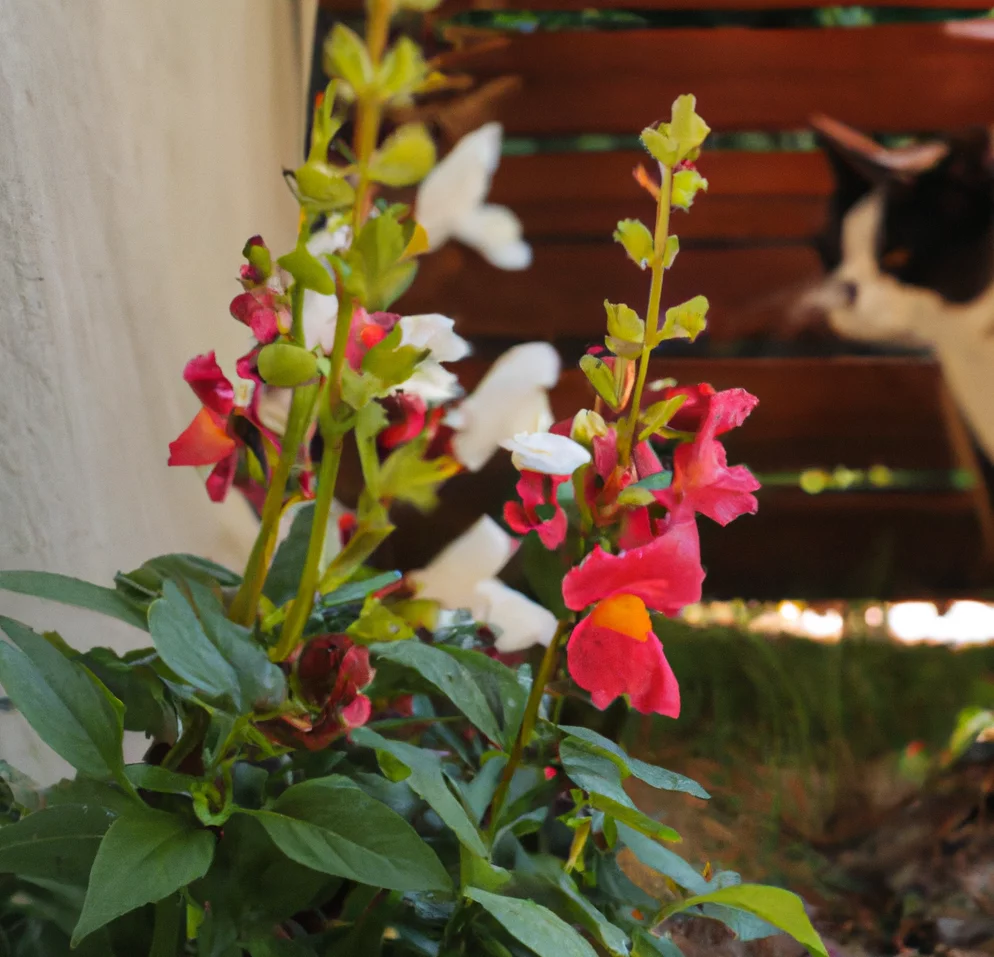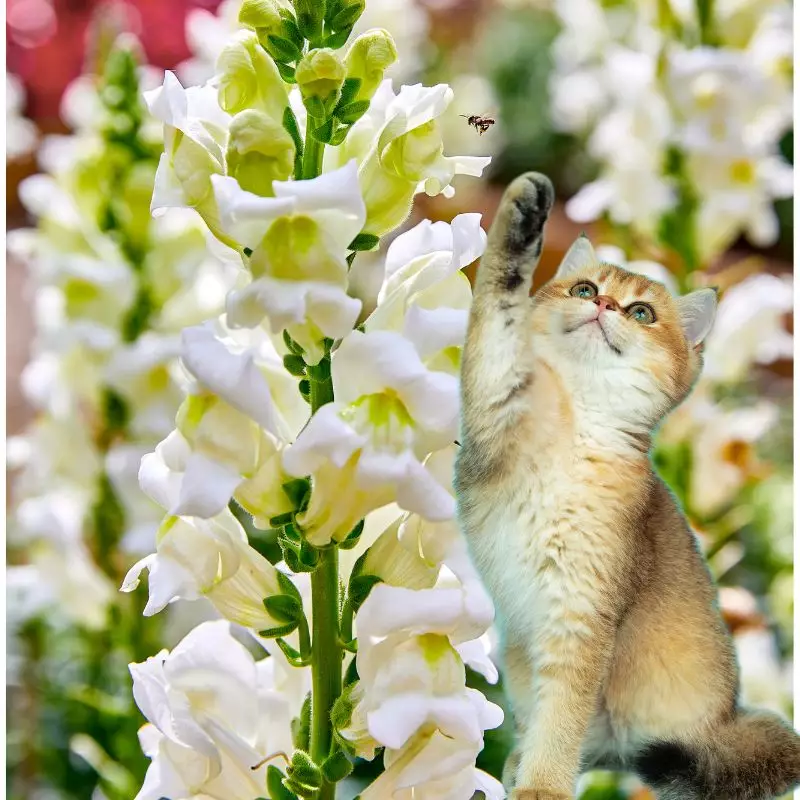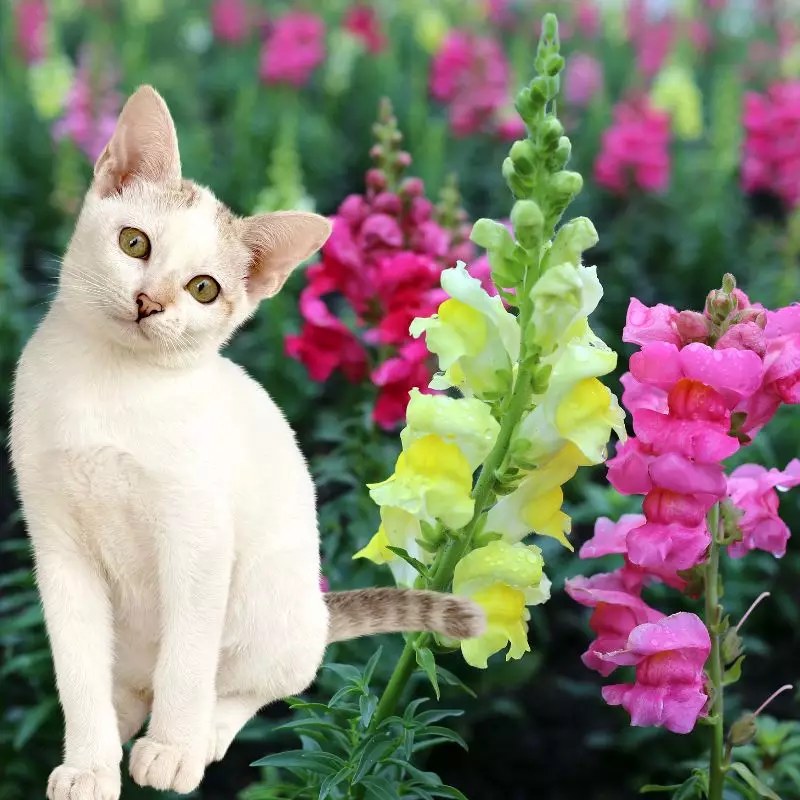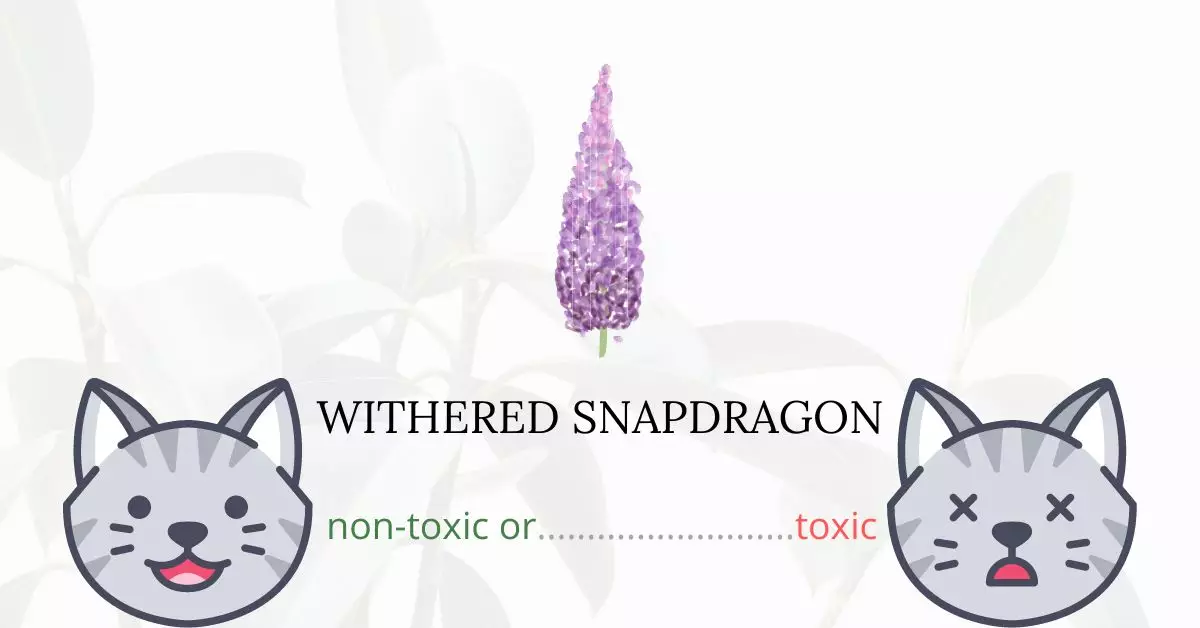Withered snapdragons or sierra snapdragons are not toxic for cats.
This conclusion is not merely based on broad assumptions; it stems from rigorous research and collaboration with a team of experienced DVMs (doctors of veterinary medicine). With their vast knowledge and insights, we’ve delved deeply into the potential risks associated with various plants, with a keen focus on Withered Snapdragons in this context. In our pursuit of accuracy and credibility, we consulted high-authority websites such as the ASPCA and PetMD.
It’s worth noting that while the ASPCA (American Society for the Prevention of Cruelty to Animals) Poison Control Center includes the withered snapdragon in their official list of non-toxic plants for cats, it doesn’t necessarily mean cats should consume them. Though considered safe, there may still be considerations for how these plants might affect cats when ingested. Dive into the article below to discover more about the broader impacts of plants on our feline friends.
Can Cats Eat Withered Snapdragon or Sierra Snapdragon?

Cats can safely eat a tiny portion of a withered snapdragon. It should not cause you to worry if your feline buddy has nibbled on a snapdragon leaf or flower. Since this plant has no toxic contents, there are no serious repercussions for cats after tasting the plant.
It should be noted, however, that excessive plant consumption can cause indigestion in cats. Felines are carnivorous animals that will most likely vomit and have diarrhea if they consume a lot of plants. They cannot digest plant matter because they are obligate carnivores.
What is Withered Snapdragon or Sierra Snapdragon?

Native to California, the withered snapdragon is an annual or perennial flowering plant. The plant grows quickly and is rounded and bushy. It has impressive rosy pink flowers, long green leaves, and tall stems.
Withered snapdragon thrives in a wide range of soil, including rocky, sandy, clay, and loamy. It prefers full sun and dry, well-drained soil, making it an ideal accent plant for a sunny Cottage Garden.
Many other names, such as Chaparral Snapdragon, Multi-flowered Snapdragon, New World Snapdragon, Sticky Snapdragon, Rose Snapdragon, and Sierra Snapdragon, are also used to refer to the withered snapdragon.
Keeping Cats Away From Withered Snapdragon or Sierra Snapdragon

It may be easier to keep your cats out of specific rooms than it is to train them not to destroy your plants. Indeed, many cat owners already have cat-free zones in their homes. You can protect your plants from feline claws and teeth by keeping them in rooms where your cats are not allowed.
Creating a special outdoor garden for your cats is also a good way to divert them from eating your plants. Plant cat-safe grasses like wheat grass, oat grass, rye grass, and catnip to entice your felines.
If your cat is simply bored and destroying your plants, perhaps all you need to do is provide some new enjoyment. Purchase a new toy for your cat to keep it entertained. Using cat posts and playpens to keep them stimulated is also a good idea.
Plants to Avoid For Your Cats
If you are a cat owner and unsure if the plants growing in your yard are harmful to your cats, check out this list of toxic plants for cats. You can also check our list of non-toxic plants for cats.





